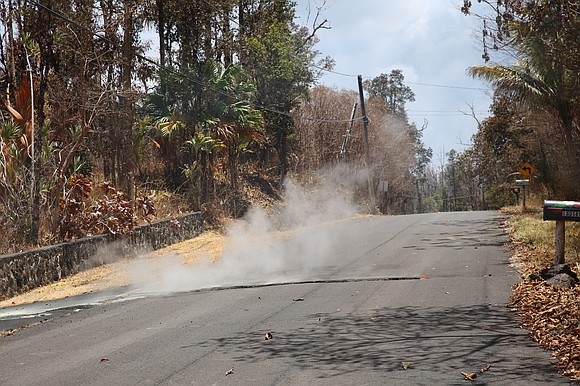Dangerous levels of sulfur dioxide prompt health warning in Hawaii
CNN/Stylemagazine.com Newswire | 5/15/2018, 12:38 p.m.
By Holly Yan, Madison Park and Scott McLean, CNN
(CNN) -- As if the catastrophic, home-devouring lava weren't bad enough, now residents have to worry about choking on sulfur dioxide.
Dangerous levels of the toxic gas are rising from some fissures, or cracks in the ground caused by the volcano, Hawaii County officials said.
"Severe conditions may exist such as choking and inability to breathe," the county's civil defense agency said. "This is a serious situation that affects the entire exposed population."
Officials warned residents to leave the area and to get medical attention if they're affected by the gas.
Since the Kilauea volcano erupted May 3, it's been one nightmare after another for residents of southeast Big Island.
'It sounded like hammers in the dryer'
At least 19 fissures have cracked open since Kilauea Volcano erupted, purging lava and sulfur dioxide from deep underground.
Fissure 17 is the most active, shooting lava like a fountain and "sending spatter more than 100 feet into the air," the Hawaiian Volcano Observatory said.
CNN's Stephanie Elam said her heart started pounding as she approached one fissure.
"It sounded like hammers in the dryer," she said. "The molten rock was such a deep vibrant orange that it looked technically altered. When the sulfur dioxide hit my lungs once, it took my breath away."
The Hawaii State Department of Health is asking the general public to avoid any area with fissures because the gases emitted require special cartridge respirators.
Hawaii residents scramble for masks that won't actually help them
More eruptions could follow
Scorching lava has already swallowed dozens of homes and vehicles. The number of structures destroyed is at least 37... and counting.
In addition to the the threat of lava and toxic gases, now there are concerns about phreatic eruptions.
Those are steam-driven explosions that occur when water beneath the ground or on the surface is heated by magma, lava, hot rocks, or new volcanic deposits, the US Geological Survey says. The intense heat may cause that water to boil and result in eruptions.
The lava lake in the crater has been dropping since May 2, which increases the chances for a phreatic explosion.
USGS officials said a phreatic eruption could happen at Halemaumau crater at the top of the Kilauea volcano. And it could send ash plumes as far as 12 miles from the summit crater, the Hawaiian Volcano Observatory said.
But it will be difficult to warn residents who may be in the path of such an eruption.
Janet Babb, a geologist from the volcano observatory, says phreatic eruptions are "notoriously hard to forecast, and can occur with little or no warning."




